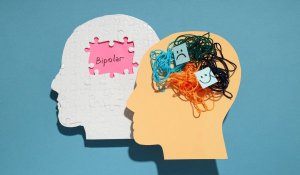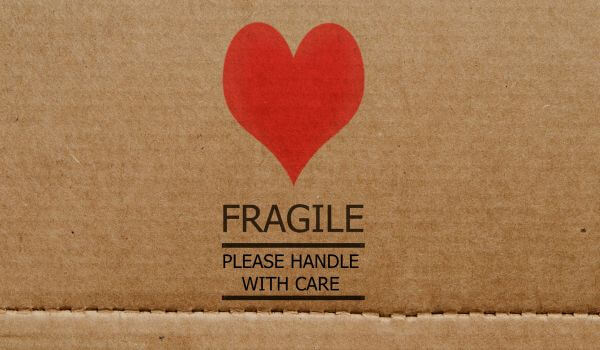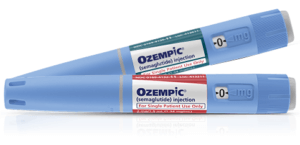The word “mania” carries with it some highly negative connotations. It’s easy to draw from childhood memory an image of a “maniac” – someone truly frightening and possibly dangerous. But the way the word is used today in discussions of mental health should be understood differently. Until recently, people who were showing signs of acute mania, exhibiting uncontrollable swings in their moods, from lows to highs, were classified as manic depressives, but each one of those words can also be misunderstood, so of late healthcare providers have switched over to the term bipolar disorder, which comes without unnecessary negativity.
Moving from manic depressive syndrome to bipolar disorder
The movement toward more sophisticated classifications of mental health disorders, such as the Diagnostic and Statistical Manual of Mental Disorders (DSM), has swung toward use of the new term “bipolar disorder” rather than “manic depressive syndrome”, because this allows for more clarity in diagnosis.
Why the shift to “bipolar disorder”
The term “manic depression” carried significant stigma, partly due to the loaded word “maniac”. Using “bipolar disorder” moves the focus away from these stigmatizing labels. Bipolar disorder is a more specific clinical term that aligns with modern diagnostic systems like the DSM, allowing for better differentiation of symptoms and more precise diagnoses. The older term “manic depression” failed to encompass less severe forms of the disorder, such as those involving hypomania (less extreme highs), which are now included under the broader umbrella of bipolar disorder.
Variations of classification
- Bipolar I disorder – defined by at least one manic episode, which can be followed by depressive or hypomanic episodes.
- Bipolar II disorder – defined by a pattern of both hypomanic and major depressive episodes, but no full manic episodes.
- Cyclothymic disorder, which is a milder, chronic form with numerous periods of hypomanic symptoms and depressive symptoms that are less severe and don’t meet the full criteria for bipolar episodes.
Acute mania treatment sits within this broader picture of bipolar conditions. When a person has an intense high, with fast speech, racing thoughts, and little need for sleep, the episode can affect work, relationships, and safety. Good information helps families understand what is happening and encourages them to seek help early. Anyone who notices sudden, severe changes in mood or behaviour should talk to a qualified healthcare provider before making any decisions about treatment or medication.
In practice, care for acute episodes is part of the wider management of acute mania. This means focusing on safety, calming overstimulated thinking, and helping the person return to a more stable mood. Plans usually combine medicines, support, and clear routines over time rather than one quick fix. In 2017, the National Alliance on Mental Illness published the most consise and specific description of the disorders, along with clear recommendatons for diagnosis and treatment by healthcare professionals.
Mania – when the mind moves too fast
If you’ve ever watched someone you love race through thoughts faster than they can speak, you know how deeply unsettling mania can be.
Acute mania is usually linked with bipolar disorder, especially Bipolar I. Mood and energy rise abnormally high, and ordinary worries may seem distant or unimportant. At the same time, families can feel frightened and confused by sudden changes in behaviour, sleep, and judgment. Early support often makes a big difference to how the episode unfolds.
It helps to remember that a manic episode is not a character flaw. It is a health event in the brain that can be treated and managed, just as asthma or diabetes can be managed over time.
What is acute mania?
Doctors describe acute mania as a period of extremely elevated, expansive, or irritable mood with a big increase in energy or activity. It usually lasts at least a week, or less if hospital care is needed. During this time, thoughts speed up and behaviour becomes more driven and less cautious.
- Decreased need for sleep, sometimes feeling rested after only a few hours
- Rapid speech and racing thoughts that jump from topic to topic
- Impulsivity or risky behaviour with money, sex, driving, or big life decisions
- Grandiosity, or feeling unusually powerful, special, or important
- Poor judgment, aggression, or irritation when others try to set limits
Hypomania is a milder form. The person may feel energised and productive but can still function in daily life, and psychosis or hospitalisation are not present. In full mania, symptoms are stronger and can lead to serious problems with work, relationships, or safety.
Many people also wonder about mania vs anxiety. Mania often brings overconfidence, restlessness, and a sense of speed. Anxiety usually brings fear, worry, and a focus on worst‑case scenarios. The two can overlap, which is why careful assessment by a mental health professional is so important.
How mania can look and feel
To the person, it can feel euphoric – like the brain is moving faster than life itself. To family and friends, it can look frightening – someone you love becoming impulsive, irritable, or detached from reality.
In severe cases, a person may experience a psychotic episode. This can include seeing or hearing things that are not there, or holding strong beliefs that do not match reality. Sometimes a person believes they have special powers or a special mission. At other times, they may feel watched or threatened when there is no real danger.
Understanding how mania looks from both the inside and the outside encourages compassion. Families are often dealing with sudden changes, broken sleep, and worry. Calm, non‑judgmental support can help keep channels of communication open even when behaviour is confusing.
What causes acute mania?
There is no single cause. Experts believe that acute episodes grow from a mix of factors:
- Genetic predisposition, such as a close relative with bipolar disorder
- Sleep deprivation or irregular sleep patterns
- Major stress, trauma, or sudden life changes
- Changes in prescribed medication
- Alcohol or other substance use
Brain chemistry also plays a role. Imbalances in neurotransmitters such as dopamine and norepinephrine can make mood and energy swing far beyond the usual range. Over time, these shifts can form part of the stages of mania, from early restlessness and less sleep to more obvious changes in behaviour, judgment, and reality testing.
Diagnosing mania and getting help early
Early recognition is important. At first, high energy and confidence can look like creativity, ambition, or simply “a good mood.” Over time, though, the pattern of little sleep, rapid speech, and poor decisions becomes clearer.
Diagnosis usually involves:
- A detailed psychiatric evaluation that explores current symptoms and daily life
- Review of personal and family history, including past mood episodes
- Checks for other causes, such as thyroid problems, infections, or medication reactions
- Screening for substance use, because some drugs can mimic or worsen mania
Sometimes a person presents with severe lows, including suicidal thoughts or a depression with psychotic features. In those cases, a careful history may reveal past high periods that suggest bipolar rather than a single depressive disorder. This matters because acute bipolar mania treatment differs from treatment plans for depression alone.
Treatment for acute mania
In most cases, treating mental health during an acute episode means combining medication, therapy, and lifestyle support. Plans are tailored to each person and adjusted over time by a psychiatrist or other qualified clinician.
Medication options often include:
- Mood stabilizers such as lithium, valproate, or carbamazepine
- Atypical antipsychotics such as olanzapine, quetiapine, risperidone, aripiprazole, or lurasidone
- Short‑term benzodiazepines to help with severe agitation or insomnia
There is no single “drug of choice for acute mania” that suits everyone. Instead, professionals consider symptom pattern, medical history, other medications, and past responses to treatment. Safety, side‑effect profile, and long‑term needs all matter. No changes to medicines should be made without guidance from a qualified healthcare provider.
Psychological support is also important. Types of therapy for mental health that may help include:
- Cognitive Behavioral Therapy (CBT) to explore thoughts and behaviours and build coping skills
- Family‑focused therapy to improve communication and problem‑solving at home
- Psychoeducation to help individuals and families recognise triggers and early warning signs
All of these approaches fit within broader acute mania treatment guidelines, which aim to reduce harm in the short term and support long‑term stability.
IsraelPharm can play a role in getting the right medication at affordable prices. We offer top-quality brand and generic prescription drugs like Zyprexa (olanzapine), Risperdal (risperidone), and Seroquel (quetiapine), delivered directly to your door with complete privacy and security. IsraelPharm helps make ongoing treatment more accessible for families managing bipolar disorder.
Supporting a loved one through mania
Support from family and friends can make a real difference. Helpful steps can include:
- Staying as calm as possible and avoiding direct confrontation during tense moments
- Encouraging regular meals, fluids, and rest, even if sleep is still broken
- Helping the person stay in touch with their treatment team and attend appointments
- Seeking emergency care if there are signs of self‑harm, harm to others, or extreme confusion
- Looking after personal wellbeing, because caring during an episode is emotionally demanding
Community support such as crisis lines and mental health organisations can also help guide families through difficult phases, offering practical advice and reassurance.
Life after an episode: recovery and hope
A manic episode can last from days to weeks. Once it begins to settle, a person may feel tired, embarrassed, or low. This “crash” phase can be hard on both the individual and the family. Gentle routines, patience, and ongoing follow‑up care help build confidence again.
Long‑term management of acute mania and bipolar disorder often includes:
- Regular sleep and daily routines
- Stress‑management techniques, such as gentle exercise or relaxation practices
- Taking medication as prescribed and discussing any problems with a clinician
- Ongoing therapy for mental health to process experiences and plan for the future
With consistent support, many people return to work, study, parenting, and relationships. Stability is possible, even if there are occasional setbacks along the way.
Key takeaway: compassion and consistency are the best medicine
Acute episodes can be frightening, but they are not the whole story of a person’s life. Compassion, clear information, and steady follow‑up care create a safer path through the highs and lows. Families do not have to manage this alone; trained professionals and community resources are there to help.
If someone you love is living with bipolar disorder, remind them (and yourself) that recovery isn’t instant, but with care, it’s absolutely possible.
Frequently asked questions about mania
What is the difference between mania and anxiety?
Mania vs anxiety can be confusing because both involve strong feelings and changes in behaviour. In mania, mood and energy rise. A person may feel confident, excited, or driven, with racing thoughts and less need for sleep. In anxiety, the main feelings are fear and worry. Thoughts often focus on what might go wrong, and the body can feel tense or shaky. Sometimes both conditions occur together. A qualified healthcare provider can sort through symptoms and suggest safe next steps.
How is a manic episode different from hypomania?
Both mania and hypomania involve higher mood and energy, but the impact on daily life is different. In hypomania, a person may sleep less, talk more, and feel unusually productive, yet can usually keep working or studying. In a full manic episode, symptoms are stronger. Behaviour may become risky, judgment is more affected, and hospital care may be needed to protect safety. If there are hallucinations or delusions, the episode is considered manic rather than hypomanic.
What are the main options for acute bipolar mania treatment?
Acute bipolar mania treatment usually combines medicine and support. Common medicines include mood stabilizers like lithium or valproate and atypical antipsychotics such as quetiapine or risperidone. Short‑term medicines for sleep or agitation may be added. At the same time, structured routines, reduced stress, and good nutrition support overall health. Therapy helps people and families understand triggers and early warning signs. All treatment choices should be made together with a qualified healthcare provider who knows the person’s full history.
Is there a single drug of choice for acute mania?
There is no single medicine that fits everyone as the “drug of choice for acute mania.” Clinicians often start with well‑studied mood stabilizers or atypical antipsychotics, then adjust based on how the person responds. They also consider other health conditions, possible interactions with existing medicines, and the person’s own preferences. Sometimes more than one medicine is used. Because each case is different, it is important that decisions about medication are guided by a psychiatrist or other qualified healthcare provider.
How do mood stabilizers help in the management of acute mania?
Mood stabilizers help smooth out the extreme highs and lows seen in bipolar disorder. In an acute episode, they can lower energy, slow racing thoughts, and reduce risky behaviour over time. Many people stay on these medicines long term to prevent future episodes. Regular blood tests or check‑ups may be needed, depending on the specific drug. Using mood stabilizers as part of the wider management of acute mania can support a more stable mood and make daily life easier to manage.
Can therapy for mental health still help after a psychotic episode?
Yes. After a severe episode, including one with hallucinations or delusions, structured therapy for mental health can support recovery. Talking with a trained professional helps a person process what happened, rebuild confidence, and plan for future stress. Family‑focused therapy can also improve communication and reduce tension at home. Therapy does not replace medicine in bipolar disorder, but it adds important tools that help people stay connected, understand their own early warning signs, and feel less alone in the recovery process.















